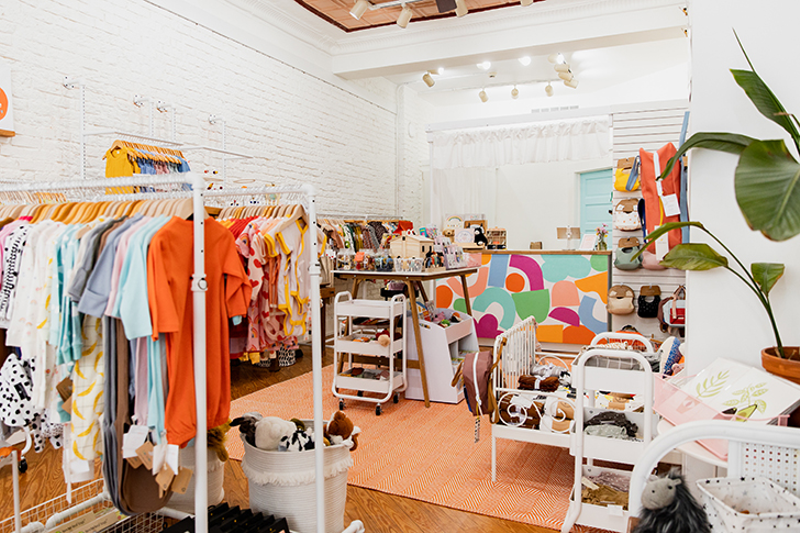Kentucky's economy continues its roll-out to reopening. And Gov. Andy Beshear has outlined sector-specific requirements for the reopening of places of worship, government offices and agencies, retail and funeral services, among others. Industry-specific guidelines are available at govstatus.egov.com/ky-healthy-at-work.
“I believe that the healthiest economy coming out of COVID-19 is going to be the one that can keep the virus contained while they successfully reopen,” Gov. Beshear said in a release about the guidelines.
So far, here's what can open in Kentucky and when:
- May 11 - Manufacturing, construction, vehicle and vessel dealerships, professional services (at 50 percent of pre-outbreak capacity), horse racing (without spectators), pet grooming and boarding
- May 13 - Hospitals and care facilities are allowed to do non-emergency surgeries and procedures at 50 percent of their "pre-COVID-19-era patient volume."
- May 20 - Retail, houses of worship
- May 22 - Restaurants, with limited 33 percent capacity and outdoor seating
- May 25 - Social gatherings of no more than 10 people, barbers, salons, cosmetology businesses and similar services
- May 27 - The governor says at this point, for health care, "most of the restrictions on types of procedures and volume will be left to the facilities to determine. However, oversight and guidelines meant to ensure that capacity remains in the system will continue."
- June 1 - Movie theaters, fitness centers
- June 11 - Campgrounds, public and private
- June 15 - Child care, with reduced capacity; and potentially low-touch and outdoor youth sports
No guidelines have been issued yet for restaurants or movie theaters, but all current sector mandates can be found at the state's Healthy at Work website.
Some of the main points in the requirements for places of worship to reopen include:
- In-person services should limit attendance to no more than 33 percent of the building occupancy capacity, including clergy and staff-employees, while maintaining social distance between household units of at least six (6) feet. This means that there must be six (6) feet between individuals on a row and individuals between rows, such that a six-foot radius is maintained around all household units.
- Places of worship should ensure, to the greatest extent practicable, that clergy, staffemployees, volunteers and congregants wear coverings (e.g., cloth mask or bandana) over their mouths and noses while attending services.
“We all want our families and our neighbors’ family to be and stay healthy. Churches, mosques, synagogues, temples, and other religious settings are here to support life and well-being," said Rev. Kent Gilbert, president of the Kentucky Council of Churches and pastor of Union Church in Berea, in response to the guidelines. "As supporters of #TeamKentucky, the Kentucky Council of Churches and its member bodies encourage everyone to follow these ‘Healthy at Worship’ guidelines so we can preserve the health of all. No one wants to rush back to worship just to cause more funerals. Worship is meant to be life-giving. These guidelines will help keep it that way in this time of pandemic illness.”
Speaking of funerals, the governor outlined requirements for those as well. Funerals and memorial services need to follow these guidelines, including:
- Limiting the attendance of in-person funerals, memorials or burials to no more than 33 percent of the building occupancy capacity, excluding any officiants, funeral directors, clergy and staff members, while maintaining social distance between household units of at least six (6) feet.
- Funeral and memorial service providers, for outdoor funerals, memorials or graveside services, should encourage services which allow their attendees remain in their vehicles and not socialize through their vehicle windows, except at a distance of more than six (6) feet. Attendees should turn off their vehicles to avoid idling and protect everyone’s health. If drive-up outdoor services are not possible, attendees to an outdoor service must maintain of at least six feet of social distance, if they are not of the same household.
- Funeral and memorial service providers should ensure, to the greatest extent practicable, that officiants, funeral directors, clergy, staff-employees, and service attendees wear coverings (e.g., cloth mask or bandana) over their mouths and noses while attending services.
Retail businesses are allowed to reopen May 20 under these specific guidelines, which include:
- Retail businesses must limit the number of customers present in any given retail business to 33 percent of the maximum permitted occupancy of the facility, assuming all individuals in the store are able to maintain six (6) feet of space between each other with that level of occupancy.
- If a retail business has more customers wishing to enter their business than is possible under the current social distancing requirements of six (6) feet between all individuals, the business should establish a system for limiting entry and tracking occupancy numbers. Once a retail business has reached its capacity, it should permit a new customer inside only after a previous customer has left the premises on a one-to-one basis.
- Retail businesses should ensure employees wear face masks for any interactions between co-workers or while in common travel areas of the business (e.g., aisles, hallways, loading docks, breakrooms, bathrooms, entries and exits). Retail employees are not required to wear face masks while alone in personal offices or if doing so would pose a serious threat to their health or safety.
Government agencies and offices have also been issue reopening guidelines, which include:
- Government offices and agencies with office-based work must ensure that no more than 50 percent of employees are physically present in the office on any given day and no more than 33 percent of the occupational capacity of the facility.
- Government offices and agencies must ensure that employees/contractors wear face masks or face coverings for any interactions between co-workers or while in common travel areas of the office (e.g., hallways, conference rooms, bathrooms, entries and exits).


